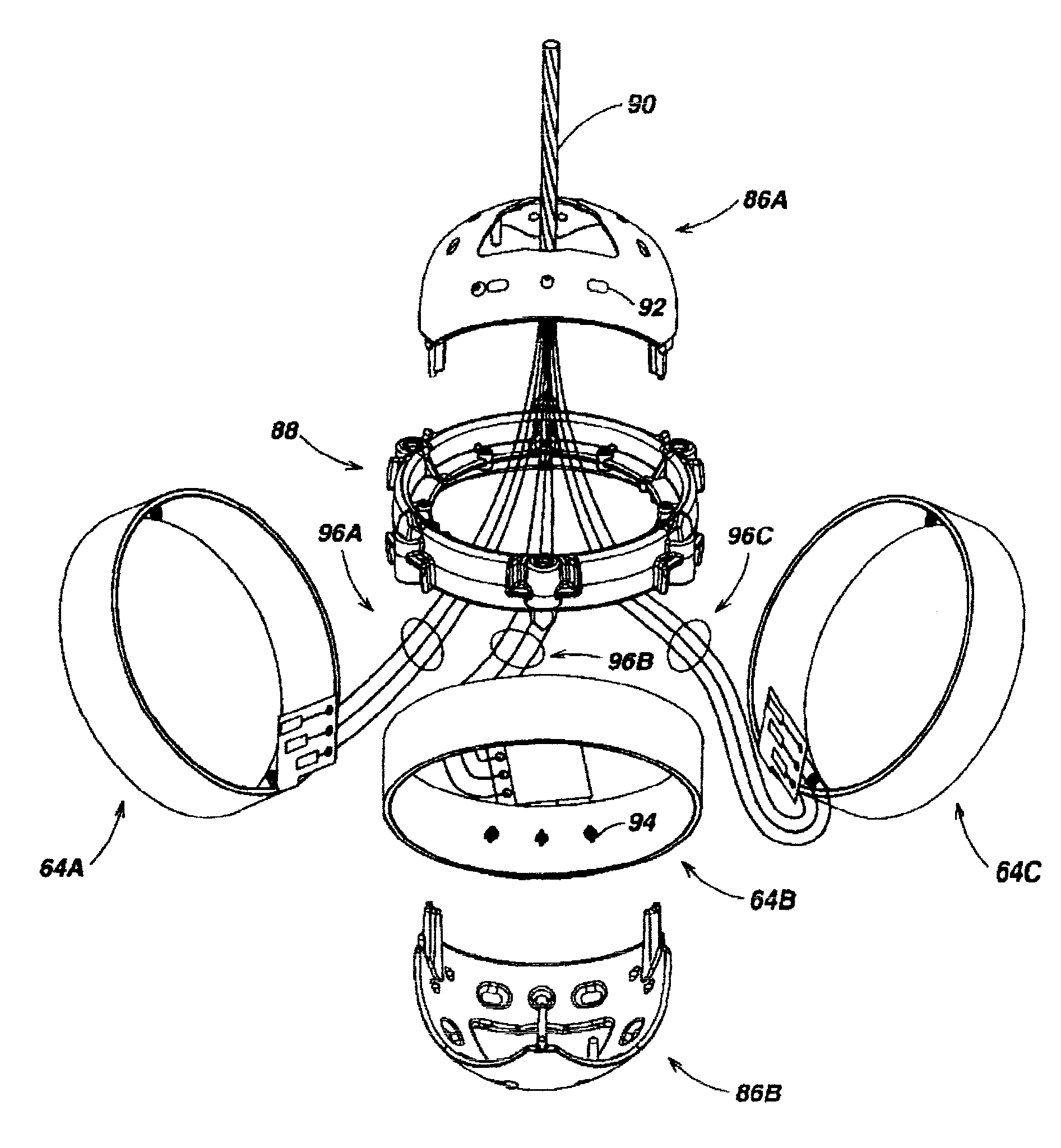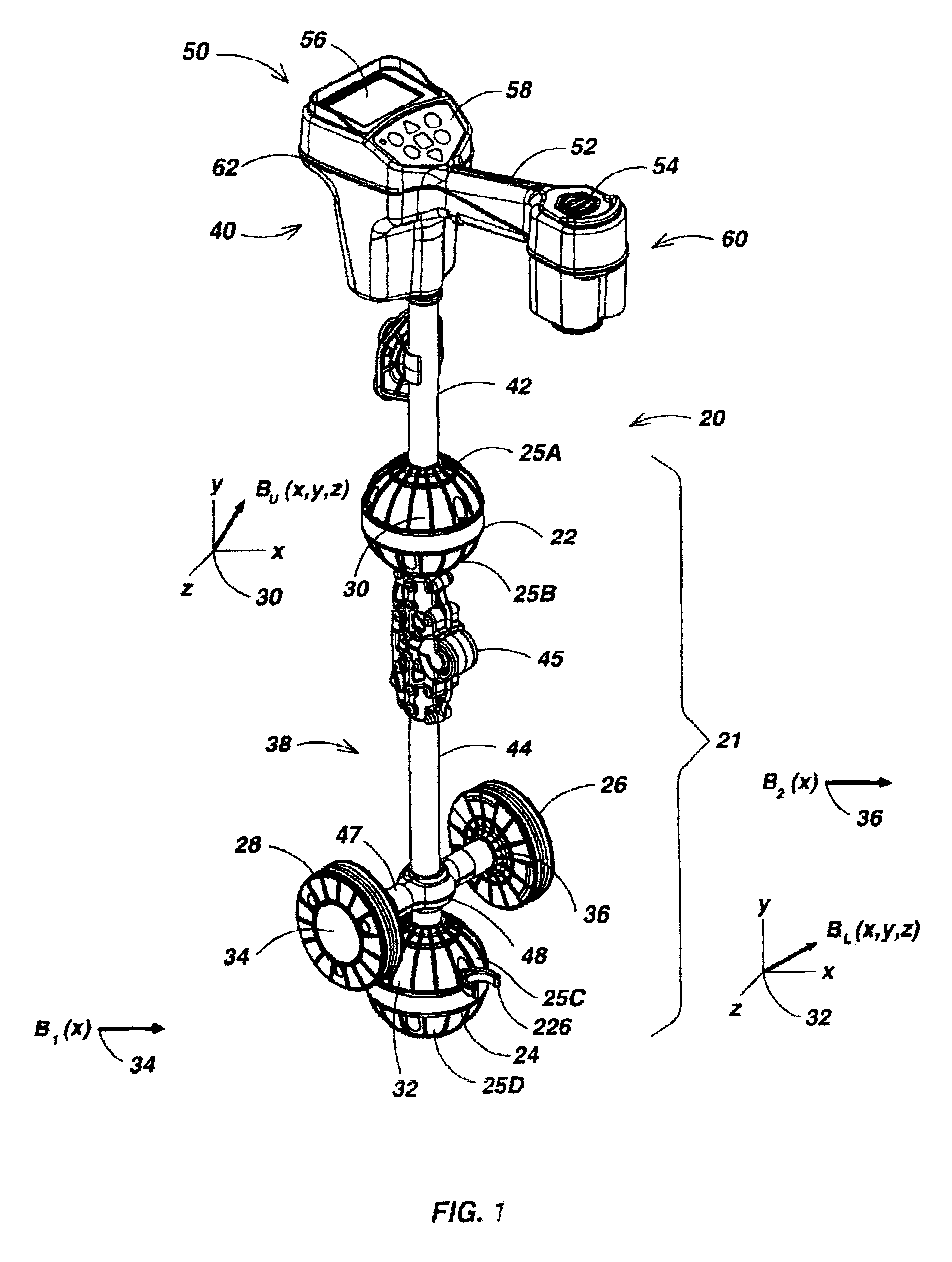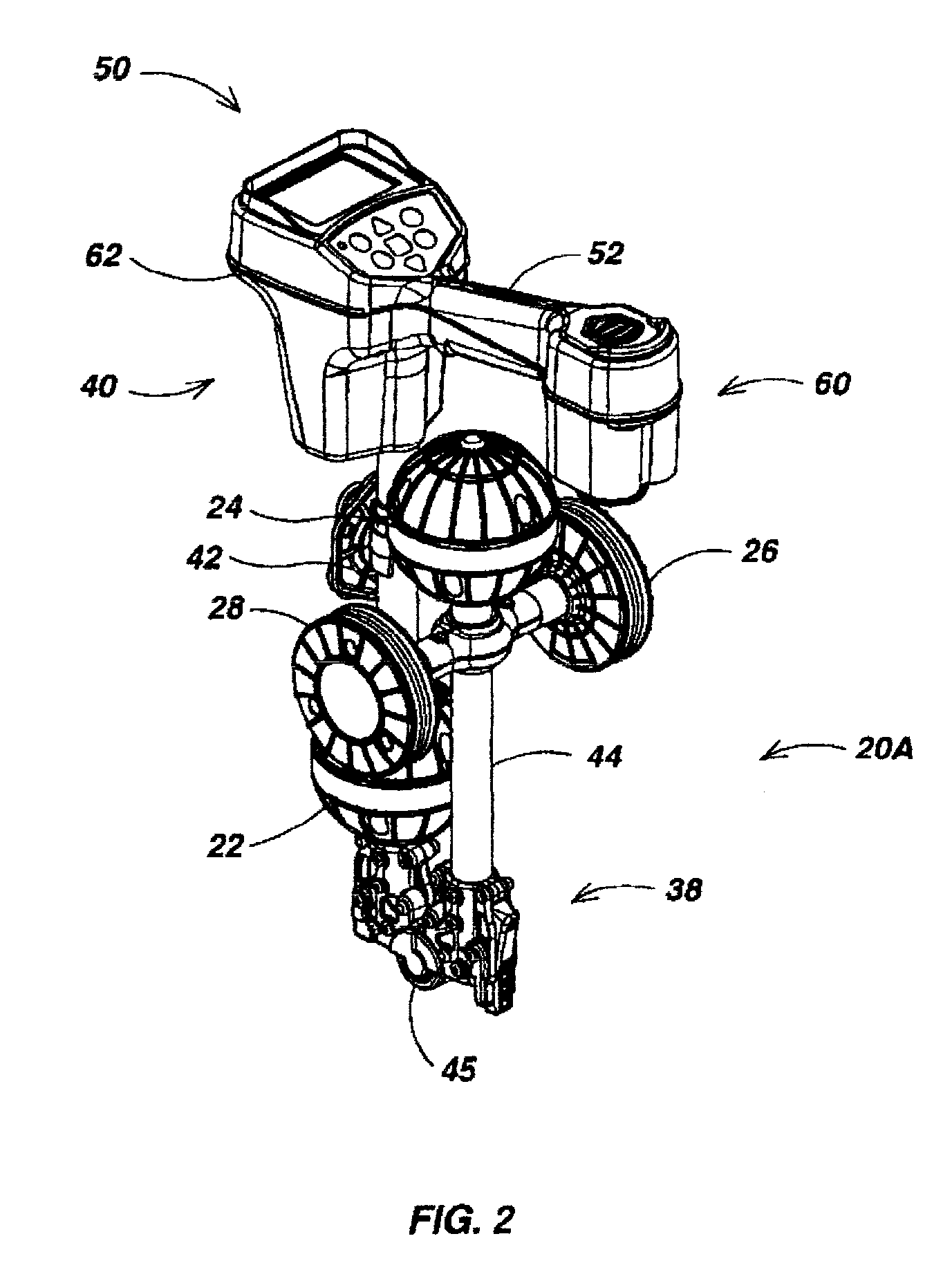Reconfigurable portable locator employing multiple sensor array having flexible nested orthogonal antennas
a portable locator and multiple sensor technology, applied in the field of walkover locator apparatus, can solve the problems of affecting the comfort and convenience of residents, affecting so as to improve the accuracy of locators, improve the manufacturability, and improve the measurement of horizontal magnetic field asymmetry
- Summary
- Abstract
- Description
- Claims
- Application Information
AI Technical Summary
Benefits of technology
Problems solved by technology
Method used
Image
Examples
Embodiment Construction
The Elongated Sensor Assembly
[0041]FIG. 1 is a perspective view illustrating a preferred embodiment 20 of the locator system of this invention shown in an operational configuration. Locator system 20 includes an elongated sensor assembly 21 having a first pair of electromagnetic (EM) sensor arrays 22 and 24 that are vertically spaced-apart and a second pair of EM sensors 26 and 28 that are horizontally spaced-apart and disposed to form a horizontal gradient sensor pair between sensor arrays 22 and 24 during operation. Upper and lower sensor arrays 22 and 24 each are enclosed within generally hemispherical top and bottom molded plastic shells in a watertight manner. Upper sensor array 22 is enclosed by a top shell 25A and a bottom shell 25B and lower sensor array 22 is enclosed by a top shell 25C and a bottom shell 25D. The seam between top shell 25A and bottom shell 25B is sealed with two layers of tape (not shown), which preferably includes application of a narrow inner taped layer...
PUM
 Login to View More
Login to View More Abstract
Description
Claims
Application Information
 Login to View More
Login to View More - R&D
- Intellectual Property
- Life Sciences
- Materials
- Tech Scout
- Unparalleled Data Quality
- Higher Quality Content
- 60% Fewer Hallucinations
Browse by: Latest US Patents, China's latest patents, Technical Efficacy Thesaurus, Application Domain, Technology Topic, Popular Technical Reports.
© 2025 PatSnap. All rights reserved.Legal|Privacy policy|Modern Slavery Act Transparency Statement|Sitemap|About US| Contact US: help@patsnap.com



